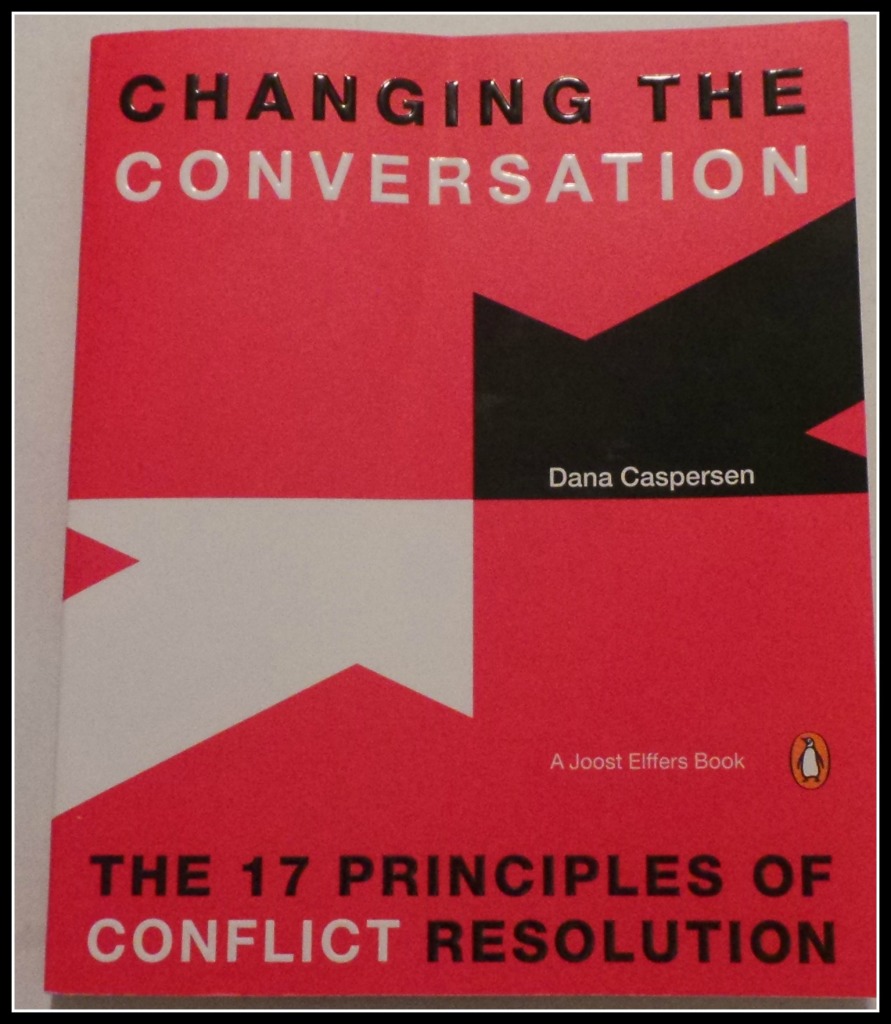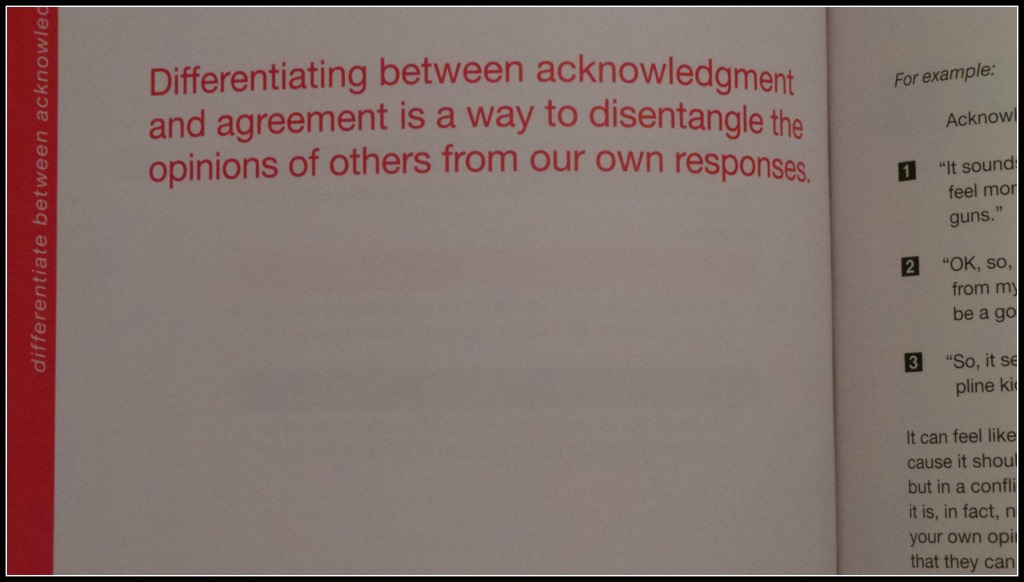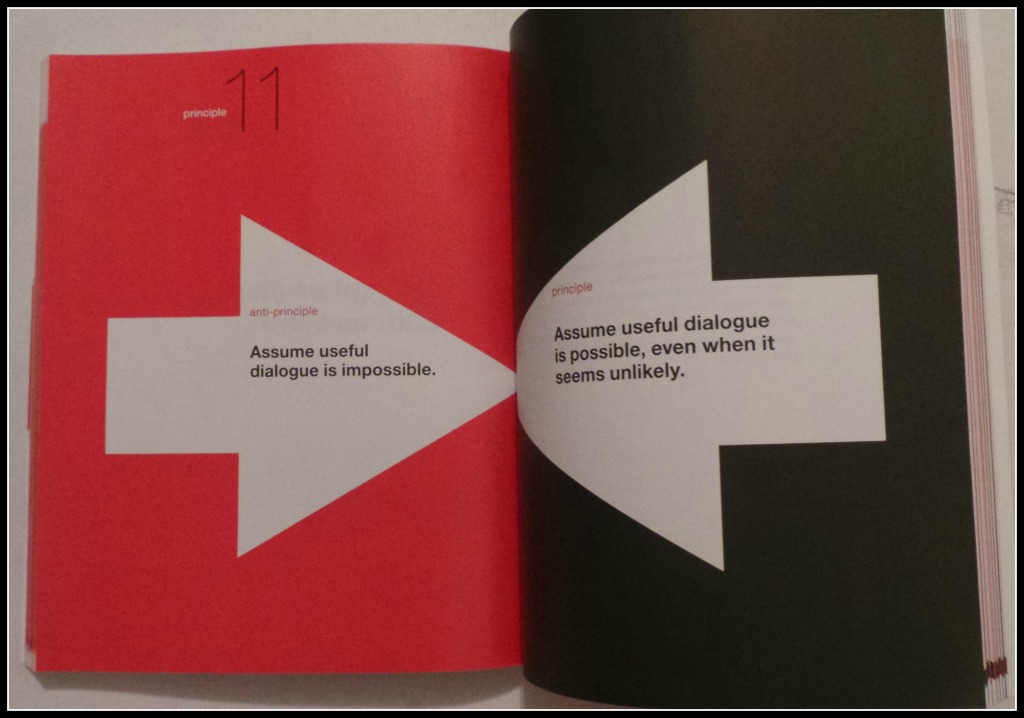Having a five-year old means negotiations and conflict resolution with small people who don’t have that strong of a command on logic or empathy. Granted, in some business cases that’s exactly what you’re dealing with, albeit with a being who is adult sized and should have those qualities. It’s because I spend most of my time with children that I wanted to read Changing the Conversation. It is not a parenting book, per se, but when dealing with someone who is melting down you seek assistance from many different sources.
What is immediately evident from Changing the Conversation is that the book uses its words sparingly. That is not a slam. Its most crowded page has one paragraph with 5-7 sentences in it. On those pages it’s placed right in the middle of the page.
The layout of the books grabs your attention and practices what it preaches.
Imagine you’re reading a book about conversation that is wall to wall words. It would be packed with academic speak, most likely not be interesting and bore you to tears. I know that I’ve (tried) to read books like that and maybe got ¼ of the way through them before giving up.
Changing the Conversation takes 17 principles of conflict resolution and explores them from wants, needs, creation and interests. The 17 principles are clearly laid out on the edge of each page. If you thumb through the book on the exterior you can see all of them in a flipbook format.
a Rafflecopter giveaway
It approaches things from an anti-principle and principle vantage point. For example an Anti-principle is to assume that useful dialogue is impossible, while its principle is to assume that useful dialogue is possible, even when it seems unlikely.
From there it breaks things down as to why the anti-principle is happening and how to work around it. It’s simple enough, isn’t it? Where the book succeeds is in its concise, graphic oriented layout that makes you want to read it. The pages and chapters are short in length, but deep in education. But because the book is one that actually makes you want to read it you spend enough time in each chapter taking in what it’s trying to teach.
Using a combination of red, black and white font on red, black and white pages the book is a graphic delight. Come for the mental stimulation and desire to influence people, stay for the graphic and practice.
The book also urges you to practice and give you examples of each takeaway and how it’s used in real world conversations. These conversations are applicable to people in business, sports, parenting, retail or anywhere.
One difference that I’ve noticed in my communication with our five year old is that I’m asking more questions and giving them more choices. Offering more choices is sales or communication 101. However, the exact phrasing of the questions can lead people to different feelings and outcomes. It’s helping us prevent some pre-school meltdown. Yes, they still happen, but we can see them coming quicker and are, to an extent, able to figure out why they’re happening.
Changing the Conversation is available from Penguin Books as a physical or Ebook. We received a copy for review purposes. All thoughts are true and our own.







 Facebook
Facebook Twitter
Twitter Flickr
Flickr GooglePlus
GooglePlus Youtube
Youtube